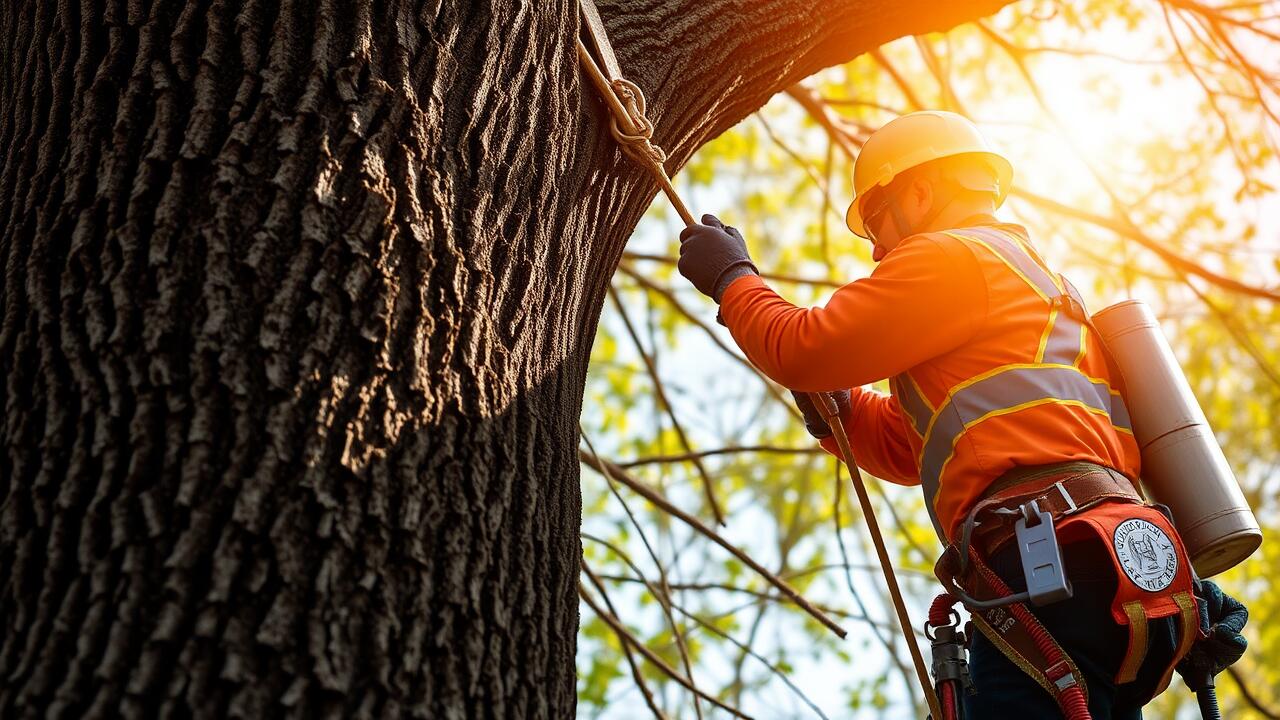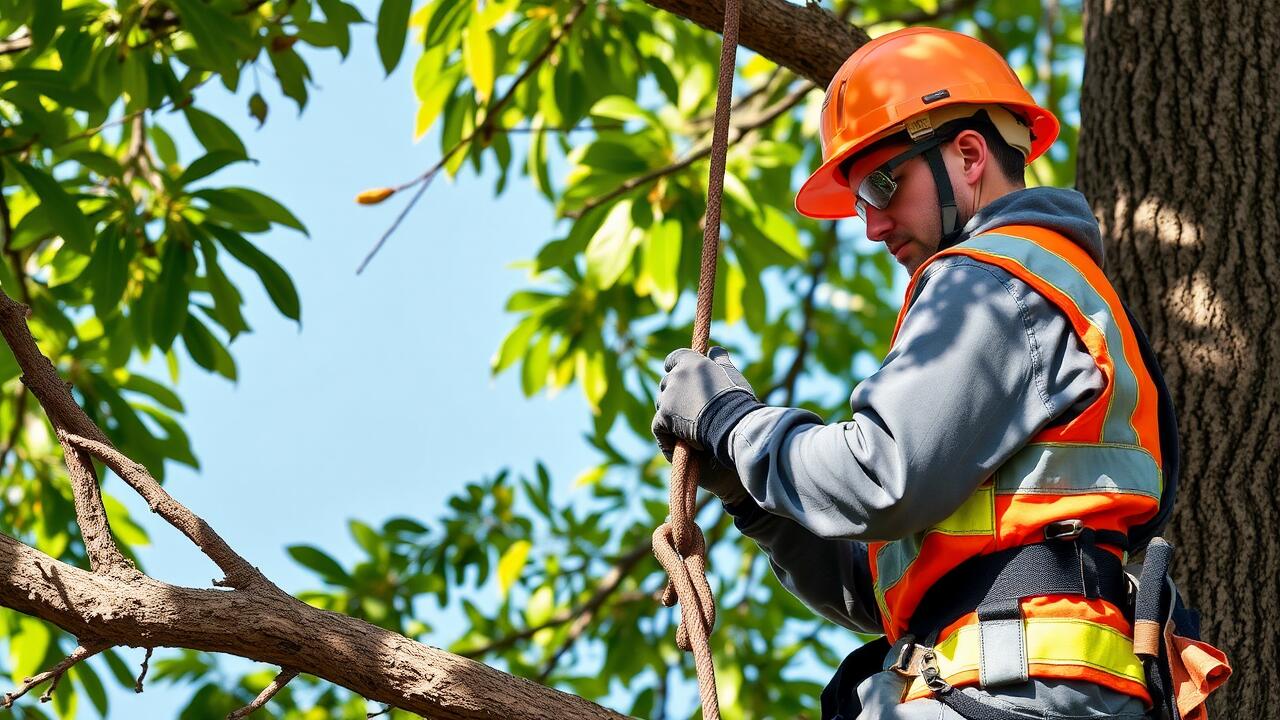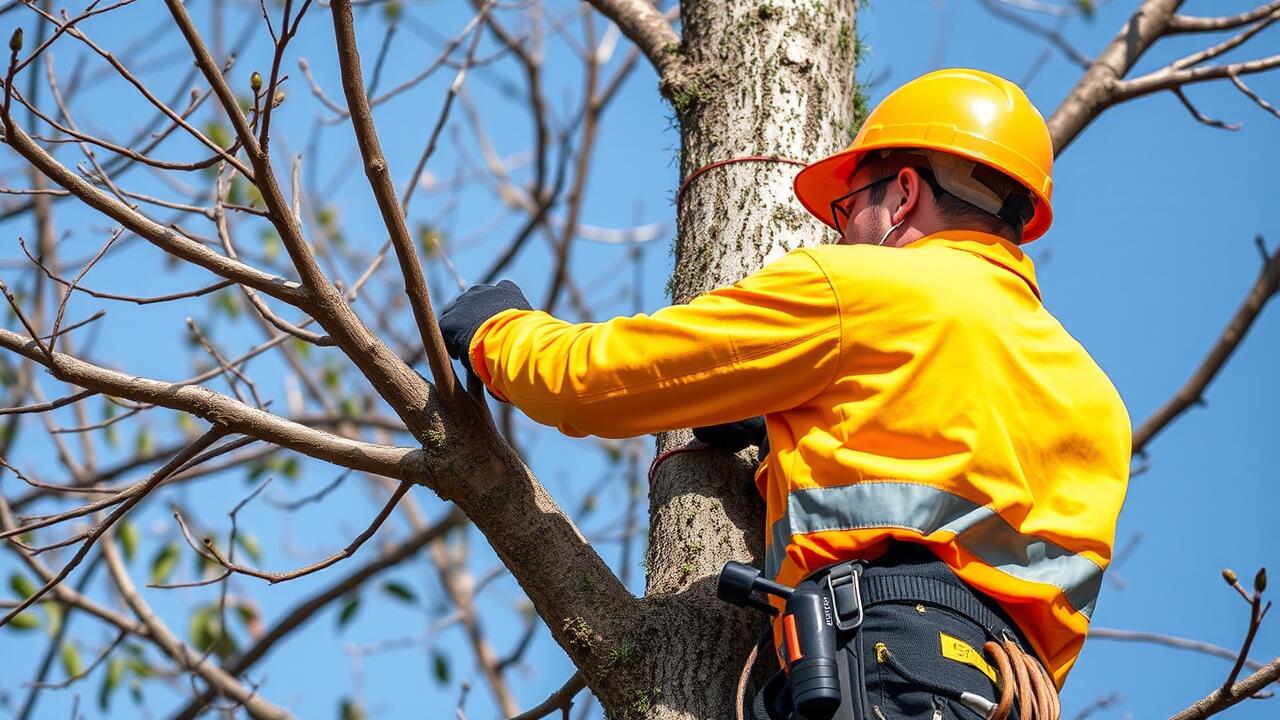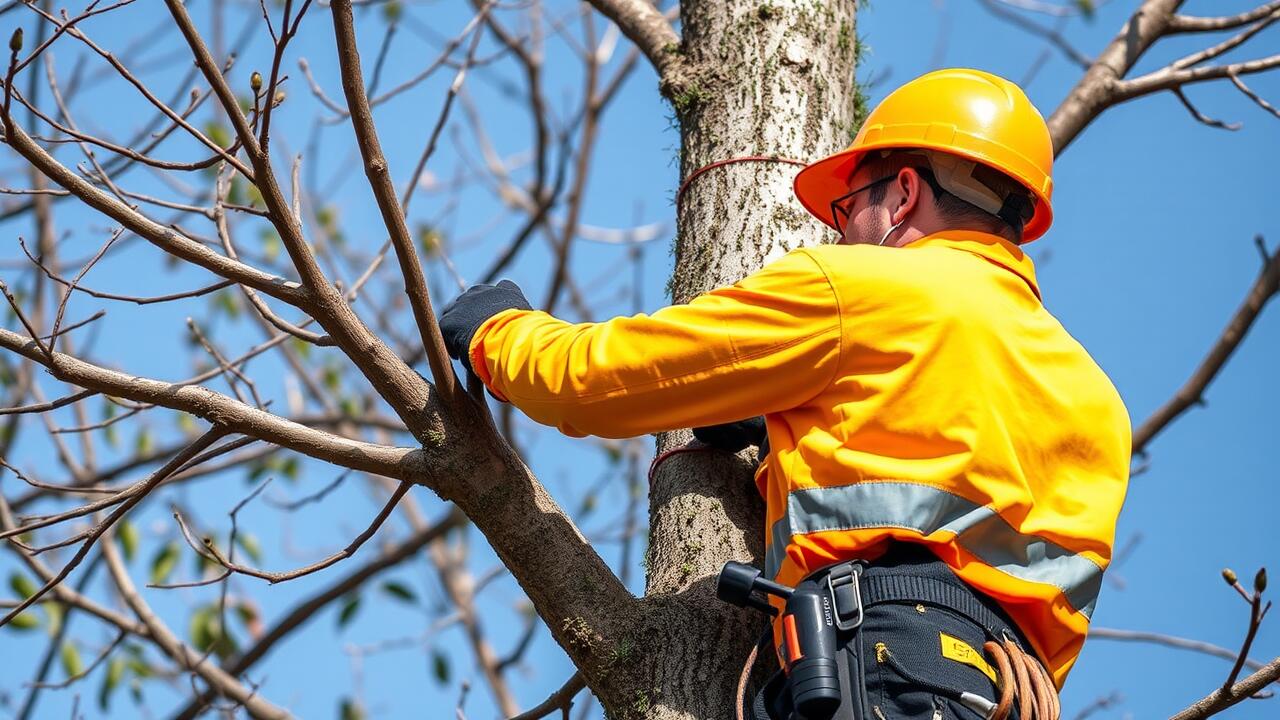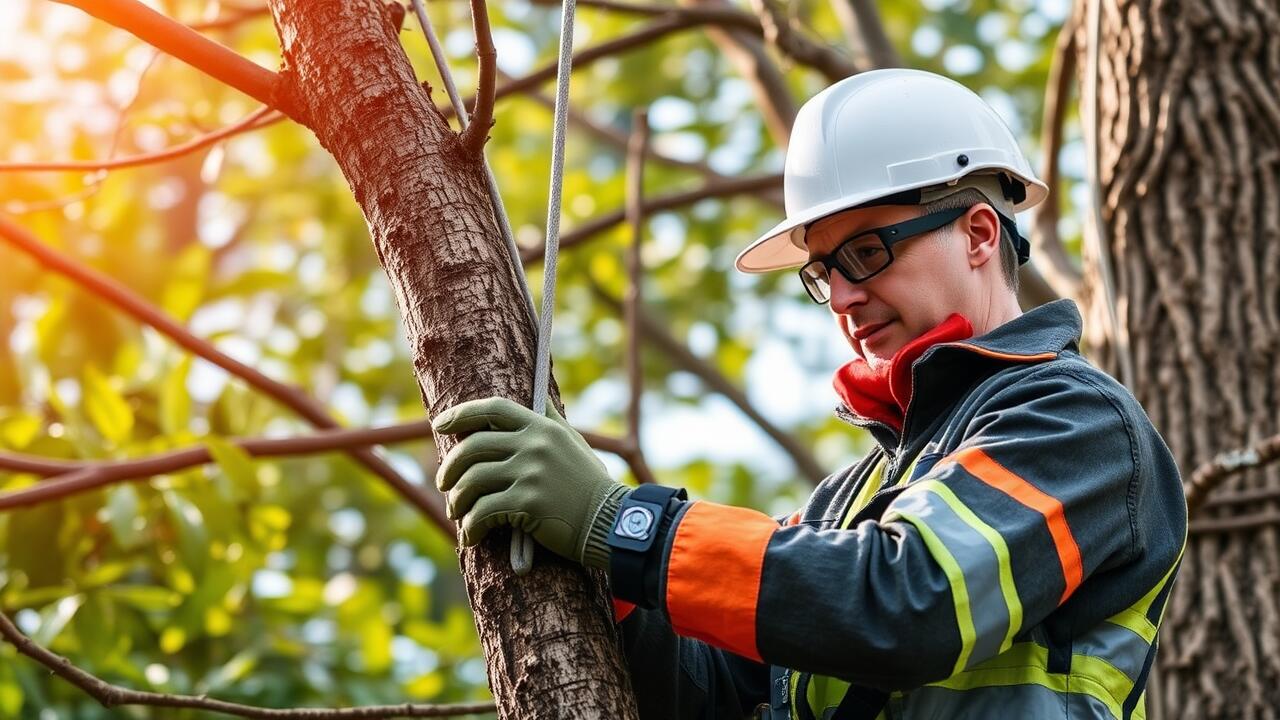
When to Consider Cabling and Bracing
When evaluating the stability and health of a tree, it is essential to consider cabling and bracing during specific circumstances. Trees that exhibit structural weaknesses, such as codominant stems or an imbalance in weight distribution, often benefit from these supportive techniques. Additionally, trees in high-wind areas or those that have experienced damage may also require enhanced stability to prevent future issues. Consulting a professional arborist can help determine if cabling and bracing are appropriate and how they can be effectively implemented.
Tree Cabling and Bracing Atlantic Station, Atlanta, serves as a valuable resource for homeowners facing concerns about their trees' stability. Many urban trees encounter challenges due to limited space and surrounding developments. In such cases, cabling and bracing can provide the necessary support to maintain a tree's health and reduce the risk of falling branches or toppling. Recognizing the signs that a tree might need added support is crucial for ensuring its longevity and safety.
Signs That Your Tree Needs Support
Trees may exhibit several signs indicating they require additional support through cabling or bracing. One common sign is a noticeable lean, which suggests an imbalance or weakness in the root system. Additionally, if a tree shows extensive bark damage or has large, heavy branches at risk of breaking, intervention may be necessary to prevent harm to the tree and surrounding properties.
Another indication of the need for support is the presence of cracks or splits in the trunk or major limbs. These structural issues can make a tree more vulnerable to strong winds or storms. Homeowners in need of professional assistance can look into services like Tree Cabling and Bracing Inman Park, Atlanta, which can help assess the tree's health and implement appropriate support measures.
The Cabling Process
The cabling process involves assessing the structural integrity of a tree and determining the best approach for support. A qualified arborist evaluates the tree's condition, identifying any weak branches or trunks that may require reinforcement. This evaluation is crucial to ensure that cabling is applied effectively, minimizing risk and promoting the tree's health. Tree Cabling and Bracing Atlanta professionals are trained to identify specific areas that need attention, ensuring that the installation will enhance stability without causing damage.
Once the assessment is complete, the arborist will select appropriate materials for cabling, usually utilizing high-strength cables and protective hardware. The installation begins with securing the cables to the tree in locations that evenly distribute stress and minimize movement. The correct placement of the cables is essential to prevent additional strain on the tree. Regular follow-ups are advised to monitor the tree's health and the effectiveness of the cabling and make adjustments as necessary.
Steps to Safely Install a Cable
When preparing to install a cable in a tree, it's crucial to begin with a thorough assessment of the tree's structure and health. Inspect the branches to determine where the cable will provide the most support without causing further stress to the tree. Ensure that the chosen branches are strong and healthy, as weak branches may break under the added weight. Using specialized tools designed for tree work increases safety and effectiveness during the installation process.
Once the assessment is complete, the installation can begin. Choose high-quality, flexible cables that allow for movement while providing adequate support. Secure the cable properly to avoid damaging the bark and ensure it is tightly but evenly anchored. For those in need of professional assistance or guidance, Tree Cabling and Bracing South Downtown, Atlanta, offers experienced arborists who can lend expertise in safely installing cables to support tree health.
The Bracing Process
Bracing a tree involves enhancing its structural integrity through the use of support systems that help stabilize weak or damaged limbs. This process typically uses materials such as rods, cables, or even wooden supports to ensure that the tree remains upright and healthy. Properly bracing a tree not only extends its lifespan but also minimizes the risk of further damage from environmental factors, like heavy winds or the weight of snow on branches.
When undertaking the bracing process, it is vital to assess the tree's condition thoroughly. Identifying the most vulnerable areas ensures placement of supports where they will be most effective. Professionals in Tree Cabling and Bracing Cabbagetown, Atlanta, employ techniques that consider both the tree's health and the surrounding environment to achieve the best outcome. Ensuring that the supports do not restrict the tree's natural growth and movement is crucial for maintaining its vitality.
How to Properly Brace a Tree
Properly bracing a tree involves a careful selection of materials and techniques to ensure the support remains effective without harming the tree. Start by assessing the area around the tree. Choose a brace that is suitable for the specific type of tree and its condition. Adjustable braces can help accommodate growth over time. Wrapping the brace with protective padding can prevent damage to the bark.
Once the materials are selected, positioning is crucial. Bracing should typically occur at an angle to provide stability without restricting the tree’s natural movement. Secure the brace points firmly to both the trunk and the surrounding soil, allowing for flexibility while providing necessary support against high winds or heavy loads. For those in need of professional guidance, seeking services like Tree Cabling and Bracing Grant Park, Atlanta can ensure a safe and effective installation.
FAQS
What is tree cabling and bracing?
Tree cabling and bracing are techniques used to support and stabilize trees that show signs of weakness or structural defects. Cabling involves installing flexible cables between branches or trunks to redistribute weight, while bracing uses rigid rods to support weak branches or trunks.
When should I consider cabling or bracing my tree?
You should consider cabling or bracing your tree if you notice signs of structural instability, such as large cracks in the trunk, significant lean, or if the tree has a history of falling branches. Consulting with an arborist can help determine the best course of action.
What are the signs that my tree needs support?
Signs that your tree may need support include visible cracks in the trunk, splits in the bark, a significant lean, or if branches are excessively large and heavy compared to the rest of the tree. Additionally, if the tree has previously experienced failure or damage, support may be necessary.
How is the cabling process carried out?
The cabling process typically involves assessing the tree’s structure, selecting appropriate cabling materials, and securely installing cables between branches or trunks to provide support. It is important to follow safety protocols and consult with a professional arborist for proper installation.
Can I perform cabling and bracing on my own, or should I hire a professional?
While some individuals may have the skills to perform cabling and bracing, it is highly recommended to hire a professional arborist. They have the expertise, tools, and knowledge to assess the tree correctly and ensure that the installation is done safely and effectively.
